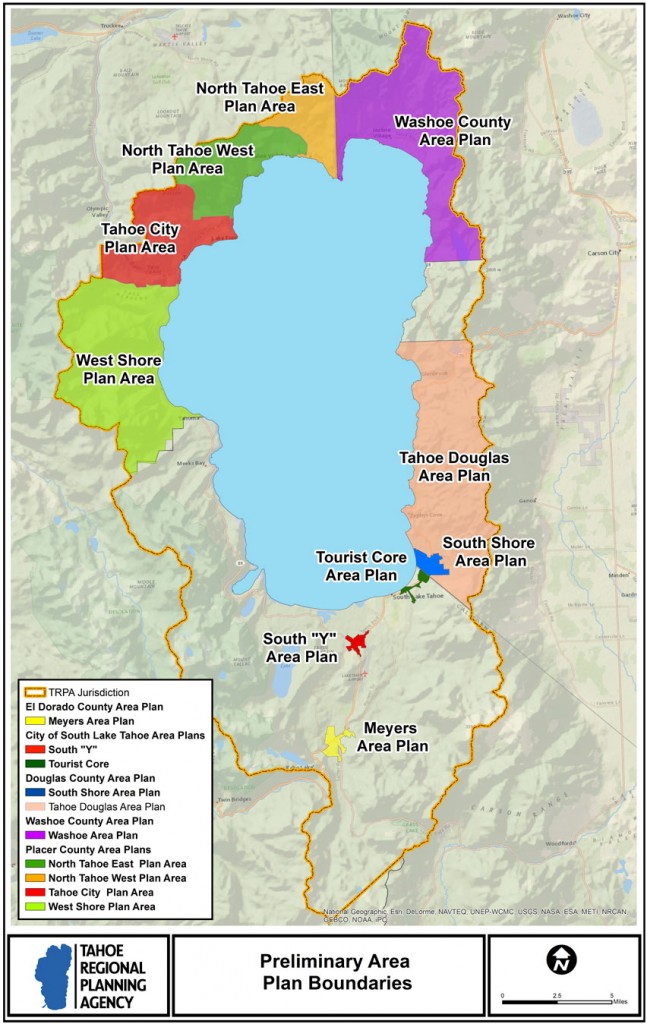
As the four months came to an end during my time working as the Land Use intern for the League to Save Lake Tahoe (The League), I have come to admire the hard work and long hours that the staff puts in to “Keep Tahoe Blue”. The League is one of the oldest environmental non-profit organizations in the area, and has been standing strong since 1957. I worked under the supervision of their Policy Analyst who showed me what it takes to ensure that the League’s voice is heard throughout the Tahoe Basin in relation to land use development surrounding the Lake. The Policy Analyst is involved with comment letter writing on draft Area Plans, Notice of Preparations (NOPs) and Environmental Impact Statements (EISs) for each county, along with attending meetings regarding these documents. The task may sound not too difficult, but it is not as simple as one may think.
There are a total of five counties that surround the Lake Tahoe Basin (Washoe County, Placer County, El Dorado County, Douglas County, and the City of South Lake Tahoe), but within those jurisdictions can be multiple Area Plan documents containing elements on how the specified area should be enhanced. For example City of South Lake Tahoe, located in the southern shore of the Lake, currently contains two different Area Plans (Tourist Core Area Plan and the South “Y” Area Plan). In order for each Area Plan to be approved it has to be in compliance with Lake Tahoe’s Regional Plan Update, and then the draft Area Plan is issued to the public allowing a month for the public to comment on the document. Followed with community meetings and a monthly Tahoe Regional Planning Agency (TRPA) Governing Board meeting held to gather input from residents, local businesses and organizations. Once the comment period is over, the draft Area Plan is revised and the process continues until the majority of the local residents, businesses and organizations are all in agreement. However, once an agreement on the draft Area Plan has been met, the next step is an EIS, but that is a different story.
The League’s Policy Analyst is responsible for commenting on the draft Area Plans and attending each of the meetings. What I have learned from assisting with the comment letter writing and attendance at these meetings, is that the Area Plan process can often take years before anything is implemented due to disagreements on the Plan. An example of this is the Meyers Area Plan located in the southern shore of the Lake. When I started my internship back in June, the Meyers Area Plan was going into its year of being in draft form. I later found out that from attending community meetings for the Meyers Area Plan, is that the local residents did not agree with the proposed changes to the area because there was concern that there would be too much development and the area would lose its “local community” appeal.
As months carried on with the Meyers Area Plan still in draft form, the League’s Policy Analyst decided to have me write a comment letter proposing for a revision of the already installed 1993 Meyers Community Plan. The difference between a Community Plan and an Area Plan is that the Community Plan is at a smaller scale of development. The goal of proposing a revision of the Meyers Community Plan would be to win its appeal to the local residents, while sharing the same vision of the draft Area Plan. To this day (January 14, 2015), there has been no final decision and meetings are still being held to gather input and agreement from the Meyers’ community.
I learned a lot from the internship experience, and I was also able to develop skills that were taught to me throughout my first year at Bard CEP during the internship. These skills include writing and literature research and analysis.

Writing a comment letter requires a lot of analytical work because you are constantly ensuring the compliance of a draft Area Plan to Tahoe’s Regional Plan Update, along with identify potential missing information. Furthermore, there is an art to comment letter writing that takes great practice to effectively communicate your ideas. In order for a comment letter to be effective, the first paragraph has to be a summary of the entire letter, which requires concise and informative sentences. A writing skill that requires much practice. Lastly, the experience also taught me that when an idea continues to fail, it’s best to propose something new in order to win compromise.
I value the time I was able to have working with the League, and in the end, you have to do what is good for the environment.

